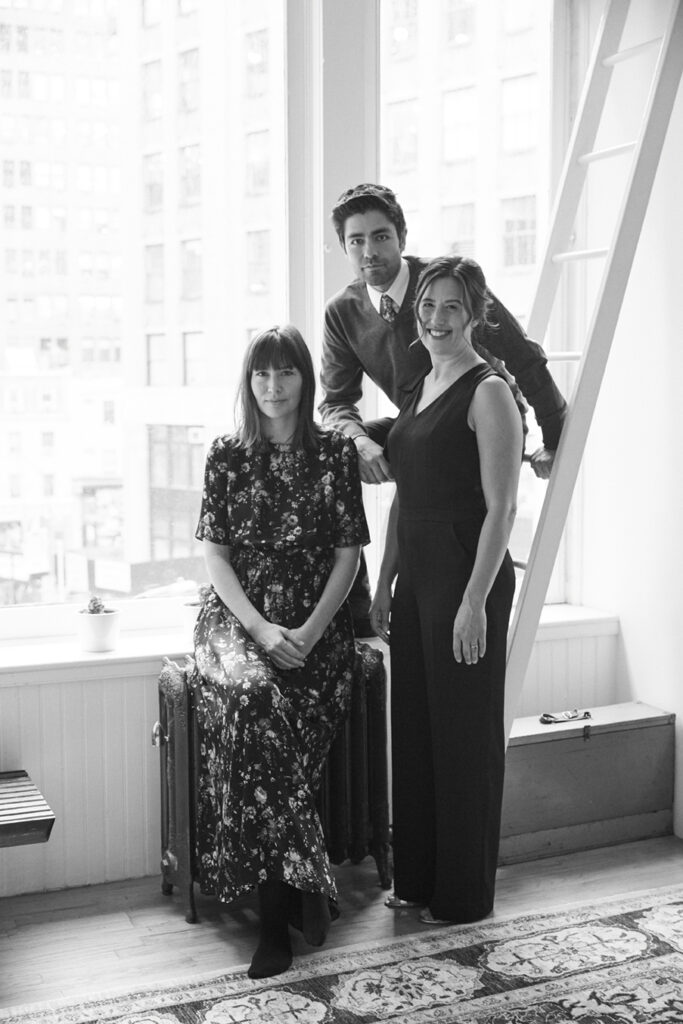FACT: There are an estimated 86 million metric tons of plastics in our oceans—that’s 5 trillion individual pieces.
It all started with one elusive whale. He’d been calling out for decades at a frequency of 52 Hz, a language all his own, his sonar transmissions picked up by a few scientists tracking foreign submarines in the Pacific Ocean, but unheard by the fellow whales he sought to find. Intrigued, a few ocean audiologists kept track of the solitary mammal, dubbed “52,” and put his story out. Many people responded, relating to the lonely giant, in his search for connection to his ilk. Actor, director, and environmental activist Adrian Grenier, and producer Lucy Sumner, were two such people. For them, the polluted conditions in 52’s habitat became an issue of crucial importance. The loneliest of whales became a mission to create more empathy for our oceans.
Seeing a disconnect between millennials and established ocean-health non-profits, the duo set out to give the original life-source a voice. The aim was to translate the abstract world of the deep sea into every day human terms, speaking our language and amplifying the messages across platforms understood by today’s connected generation. Step one, they brought on philanthropic powerhouse Dune Ives to design and lead initiatives that address environmental degradation and species decline. And thus the Lonely Whale foundation was born. An NGO still in its infancy, Lonely Whale has already packed some serious punch. They have been – a driving force behind the growing movement to eradicate single- use plastic straws: Their 2017 #stopsucking challenge went viral, and launched a partnership with the city of Seattle to eliminate the use of single-use plastic straws. In July 2018,- the city issued a ban. Other U.S. cities and communities have followed suit. Even Starbucks made a commitment to eradicate plastic straws throughout all their locations and products globally, by 2020. Serious results indeed.
Focusing on achievable goals, the organization uses strategies that promote popularity within culture – the way brands do—aka, marketing. Traditional marketing strategies had never been applied to environmental movements before,—and it looks nothing like traditional boots-on-the-ground activism. Issues are studied and honed to their root, like-minded partners are identified, messaging is simplified and amplified. Lonely Whale’s ethos is all about collaboration. Partnerships are made with corporate, governmental, and other ocean -healthfocused NGOs. A big-deal, radical collaboration began in 2017 with Dell computers. The tech giant had begun work on repurposing “ocean-bound plastics” into their supply chain. Joining forces with Lonely Whale, a new group, NextWave Plastics, entered the game, dedicated to pooling innovation and engineering resources. IKEA and HP (yup, Dell’s direct competitor) have come onboard. The goal is building the first global network of ocean-bound plastics suppliers. In other words, they are repurposing and redesigning trillions of bits of already discarded plastic into products and packaging, thus stopping those bits from permanently floating in our waterways. Next Wave Plastics’ products are already on the market.
In all of their work on the present, Lonely Whale is always thinking about the future. This past year saw the creation and activation of Ocean Heroes Bootcamp,- a collaborative global summit, empowering existing and emerging youth leaders, aged eleven through eighteen, to create their own campaigns to take action against ocean plastic pollution. These kids come in as activists, after training they come out communication-savvy, plastic- fighting superheroes. Because if not us and them, then who? The movement grows, and Lonely Whale has only just gotten started.

We sat down with Lonely Whale Executive Director Dune Ives and Co-founder Adrian Grenier, and talked about easy ways to slow the flow of plastic into our oceans. It’s all about finding what fits with your lifestyle so that you can stick to it.
1. Commit to eliminating single-use plastics from your daily life. Start small with a straw, water bottle, or plastic wrapper. The important thing is to become aware, engaged, and try something. Every little bit helps!
2. Look for opportunities to expand your individual commitment. Opting in to Amazon’s “frustration- free packaging,” and even reducing single-use plastics in your own place of work , are great advances.
3. Make your voice heard. Let your local policymakers, business leaders, and community members know that reduction of plastic pollution matters to you. This is solvable.
ADRIAN GRENIER on Creativity and Flow When do you feel the most creative? When I am around those that I love, and ideally when near water. Do you think there is a link between water and creative thinking? Yes. My friend J Nichols studies the connection between water and our mental health—,he calls it “Blue Mind” thinking. One quote I love, which I think speaks to the connection between water and creative thinking, is that “water quiets all the noise, all the distractions, and connects you to the present moment.” What is “the flow” to you? I don’t have a routine; I have a “flow.” Not trying to maintain a strict regimen allows me to keep a healthy mindset. Freeing myself from daily expectations has been really helpful—especially since I travel so much. How do you get into that state? It’s all about letting go, not sweating the small stuff. With so much coming at us each day, it’s important that we take time to rest and reset, to be gentle on ourselves.
FACT: 8 million tons of plastic are being deposited in the oceans per year. At this rate, the oceans will contain more plastic than fish by 2050.
DUNE IVES on Creativity and Guilt When do you feel the most creative? When I am with my child. The minds of children are unfettered. They don’t yet have limitations on what is possible and love to explore, create, demolish, rebuild and then do it all over again. I learn a lot from my son during play, which influences how I create in my job. Do you think there is a link between water and creative thinking? I’m really fortunate to have experienced diving. What diving allows me to do is to pay attention to color, shapes, texture, movement, and light. These are the things that give you cues about life and because I can’t verbalize how I’m feeling or what I’m thinking it causes me to meditate on my experience. I don’t often get the opportunity to quiet my mind, but when I do I’m at my most creative. I get this same experience when paddle boarding or swimming and there is something unique about the connection to water that really unleashes in my mind the possibilities. Perhaps it’s because in water you are connected at the same frequency and feel part of something much larger and more important than what is happening in your individual life.
What is your relationship to guilt? Years ago, I made a promise to myself to live my life free from guilt. For me guilt is not a motivator. It is a detractor from the more important underlying discussions we need to have. For someone to feel guilt, it is either preceded or followed by shame and shame gets us a one-way ticket on the boat to nowhere pretty fast. Do you use guilt to make others act? I try really hard not to. I’m sure sometimes I fall into the guilt trap because it’s part of our society and social norms. As a mom, wife, daughter, friend, and leader, I work hard to inspire and motivate through what is possible and champion the good things rather than focusing on the negative. I think when you do that you get a longer-term commitment to change than if you try to force it through guilt.





